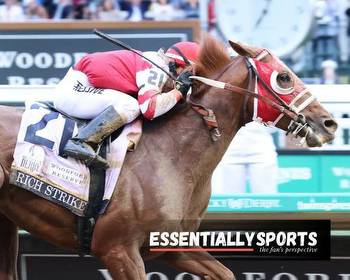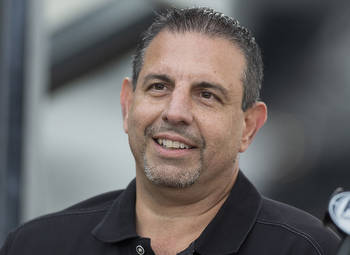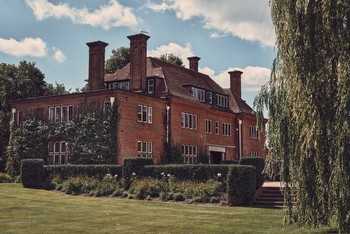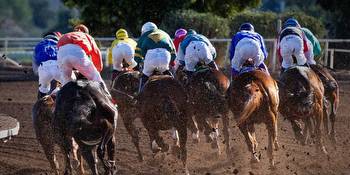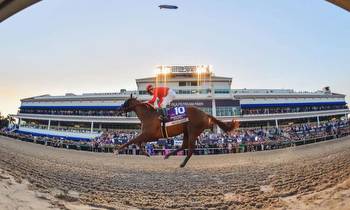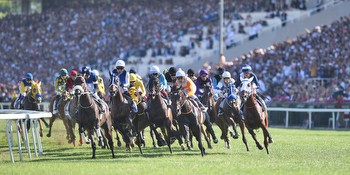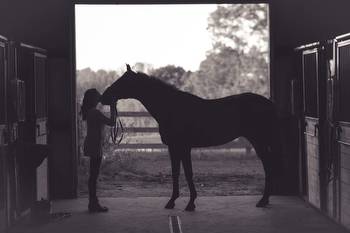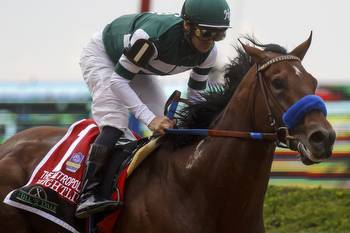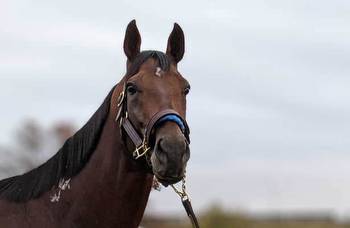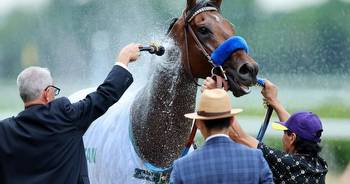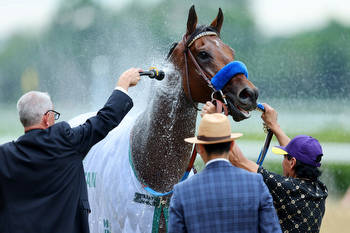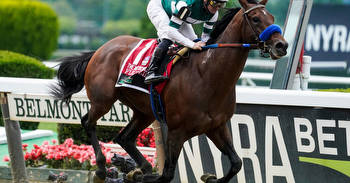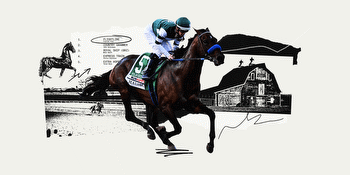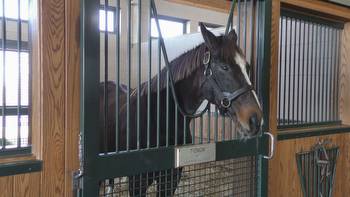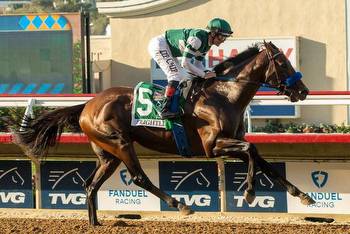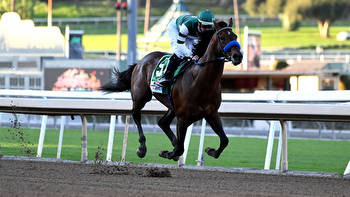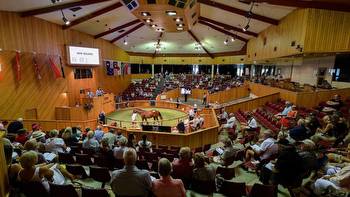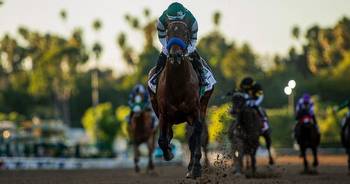Catch Flightline in the Breeders’ Cup Classic

Late Saturday afternoon at Keeneland Race Course, in the undulating hills outside Lexington, undefeated four-year-old colt Flightline will run as the heavy favorite in the $6 million Breeders’ Cup Classic. It will probably/likely/maybe/possibly be Flightline’s final race before vanning 10 miles west to Lane’s End Farm, where he will stand as a preposterously valuable stallion and either produce further generations of great horses like him, or slower ones not at all like him; but in either case he will fabulously enrich the already wealthy men, women, and corporations invested in this familial process, who can then do it all over again with another superstar. (There are a range of possibilities for Flightline’s immediate future: He could be retired on the spot, run in the Jan. 28, $3 million Pegasus World Cup, or run for his entire five-year-old season. His owners have not made this announcement, although history – and a certain brand of economic common sense about which many words will follow herein, including, these from thoroughbred owner Mike Repole: “Racing is the Flintstones, not the Jetsons” — suggest strongly that you’d be wise to get a look on Saturday).
This is intriguing – or agonizing, if you are at all romantic about the sport, or care about its aesthetic – because Flightline is one of the most enthralling racehorses in recent (or even not-so-recent) racing history. He has won all five of his races by a combined margin of 62 ¾ lengths, at distances ascending from a six-furlong sprint to the lower case-c classic distance of 1 ¼-miles. In his last race, he won the Grade I, mile-and-a-quarter Pacific Classic at Del Mar by 19 ¼ lengths, dismissing a very respectable (if not stellar) field and nearly dipping under one minute, 59 seconds (a milestone of sorts) despite getting geared down well before the wire by jockey Flavien Prat.
It was a mesmerizing performance, one of the best in the sport since Secretariat’s Belmont, and evoking similar emotions. The mention of this comparison triggers Big Red loyalists, who need to lighten up; as I wrote a month ago. There’s been no performance better than Secretariat’s, okay? But Flightline’s touched some of those same nerves.
If you happened to see it.
The problem with Flightline, if you want to call it a problem, is that his career has taken place in mainstream obscurity. A freak barn accident and nagging injuries kept him off the racetrack and out of the Kentucky Derby and the rest of the Triple Crown, which is the only path to broad renown for U.S. racehorses in this era. (There have been rare exceptions, but Seabiscuit isn’t walking through that door). His Pacific Classic win took place on the Saturday of Labor Day weekend, broadcast by FanDuel TV, which has a small, devoted audience, but caters to racing fans and bettors, not the broader cohort of sports fans. His five races have been spread across 17 months, because he is both fragile and driven. “He puts it out there, every single day,” says David Ingordo, the bloodstock agent who selected Flightline for purchase as a yearling and works in partnership with Lane’s End and owner Bill Farish.
*It is ironically appropriate that Flightline might be racing for the last time at the Breeders’ Cup, a delicious two-day, 14-race festival of stratospherically high-level competition that attracts nearly every top owner, trainer and jockey in the U.S. and Europe, but which takes place as counter programming to college football, on an NFL weekend, in the middle of the World Series. It is a sensational event unfolding in a densely packed sports calendar, and thus consumed largely by the converted.
All of these factors have lent an air of desperation to Flightline’s appearance in the Classic on Saturday – a sense that his unseen greatness must be seen before it is again unseen — forever. (Unless pedigree charts get your blood pumping). The reason for this is simple, but deeply frustrating for fans of the part of the sport that takes place on the racetrack and not in the breeding shed: Flightline (and horses of his class) have far more value as stallions than as racehorses. This has always been true, but has become more true in recent years, with the growth of an aggressively speculative economy, wherein high-powered syndicates begin pursuit of moneymaking stallions in the yearling sales ring.
First, a brief primer: Flightline has won $1.4 million on the racetrack, a figure depressed by the fact that he has not run a lot of big-money races; that number will rise to nearly $5 million if he wins the Classic and almost $7 million if he runs and wins the Pegasus. Nevertheless. That’s racing. On the Breeding side, the value of Flightline’s transfer to Lane’s End is not known, but 2018 Triple Crown winner Justify was sold to Coolmore America for $75 million (a deal that altered the industry – keep reading). Flightline is not only a breathtaking racer, but splendidly bred, from the esteemed stallion Tapit. Flightline’s stud fee has not been set, but at a relatively conservative estimate of 150,000 per mating, and 150 mares per year, he would generate $22.5 million every year (until his foals are shown to be slow, in which case the stud fee would be dropped; but also could be raised if they are runners). This is much more than he could make at the racetrack.
Also: If a decision was made to keep Flightline racing, his owners would have to pay – or continue paying – insurance that would cost millions per year. Elliott Walden, the CEO of Winstar Farm, which was majority owner of Justify and a major player in the stallion-and-speculation game, says, “It would have cost $4 million in insurance alone, just to keep Justify on the racetrack. And there is a small inherent risk in racing that is always in the back of your mind.” Risk, as in, an injured horse might or not be able to breed and a dead one definitely cannot. There is also the far-less tragic risk of losing, which also reduces value.
This is why so many successful racehorses are pulled from the racetrack at the peak of their powers and popularity. The list is endless, but consider just this year. Preakness winner Early Voting and Belmont Stakes winner Mo Donegal have both been retired. American Pharoah, the immensely popular 2015 Triple Crown winner, was retired after the BC Classic. The equally popular 2004 Kentucky Derby and Preakness winner Smarty Jones never ran after his defeat in the Belmont Stakes. And – Big Red alert – Secretariat was syndicated for $6.08 million in February of 1973, before he ran a race as a three-year-old. He did not race as a four-year-old, although he did race 21 times at two and three, whereas Flightline might race only six times (as did Justify).
*There are occasional exceptions that prove this rule: Gun Runner was a popular four-year-old who won the BC Classic, but he also did not win a Grade I race until November of his three-year-old season; there was less at risk, and significant potential upside. And of course, the financials are entirely different for fillies and mares, who can produce only one baby per year, not hundreds. (Says Ingordo, who also picked out legendary mare Zenyatta, and whose mother, Dottie Ingordo-Shirreffs, is married to Z’s trainer, John Shirreffs: “My mother likes to say, `If Zenyatt-A had been Zenyatt-O, things would have been very different.’”)
There is a historical theme in play: At one time, horse ownership was largely the province of families and individuals of vast, family wealth – with names like Whitney, Phipps, and Galbreath. Their horse operations were self-contained hobbies and often their best horses ran at four, five and six years old. Owner-breeder Allen Paulson, who fits this profile, kept Cigar in training through his six-year-old season, in 1986. They were considered “sportsmen.”
That paradigm has for the most part passed into racing history, replaced by a far more aggressively transactional ecosystem. (One other factor: “Shuttling” stallions between the Northern and Southern hemisphere breeding seasons). Sid Fernando, a longtime bloodstock consultant, says, “The traditional owners have been replaced to a significant degree by a new generation of owners who made money in other fields, and who like speculation. That speculation has become its own model. And the speculation, searching for a stallion, now starts at the yearling level.”
Walden says, “It’s true. The end user (the breeding farm) is now involved at the yearling sales level. That is relatively new.”
The entire process is accelerated, with little active regard for fans who desire, most of all, to see great horses run. “A lot of modern syndicates only care about winning one big race and then getting that horse to breeding shed,” says Jack Knowlton, managing partner of Sackatoga Stables, a modest operation that nevertheless owned 2003 Derby/Preakness winner Funny Cide (a gelding with no stallion value) and 2020 Florida Derby and Belmont Stakes winner Tiz the Law. “Those syndicates have absolutely no qualms about pulling the plug on a racing career.”
Knowlton signed a stallion deal with Coolmore during Tiz the Law’s three-year-old season, but insisted that a clause be included that allowed Sackatoga to race Tiz the Law as a four-year-old. “They didn’t like it, but they did it,” says Knowlton. Tiz the Law was injured in the winter and retired, and thus did not ultimately race at four.
There’s broad agreement that the Justify deal threw the stallion model into a sort of hyperdrive. The ownership group of Winstar, China Horse Club, Head of Plains Partners (principally, Sol Kumin), SF Bloodstock (an arm of George Soros’s Soros Fund), and Starlight Racing (principally, Jack Wolf), not all of whom were involved at the start, bought Justify for $500,000 as a yearling and sold him to stud for that $75 million. Flightline was purchased for $1 million as a yearling. At those prices, it would have been interesting how the Vanberbilts might have proceeded. “I deal with sporting owners,” says Ingordo. “But you have to be a really sporting owner to keep horses like these on the racetrack.”
Mike Repole, the billionaire entrepreneur (most notably Vitaminwater) who operates Repole Stables and won the 2019 BC Classic with four-year-old Vino Rosso and was part owner of Mo Donegal, sees a larger issue. “Every sport is evolving,” says Repole. “Racing is not evolving. The Kentucky Derby, the biggest race in America, the race that every entrant dreams of winning, has a $3 million purse. It should probably be $20 million. The Breeders’ Cup Classic is $6 million; it should probably be $25 million. Then you would see more horses stay in training.” It’s common for everyday fans to ask why wealthy owners, like Repole, need the more millions offered by sending young horses to the breeding shed. “OK,” he says. “Mike Repole doesn’t need more money, except Mike Reople, puts that money back into racing.”
Furthermore: “There’s no governing body, no commissioner, just everybody looking out for their own self-interest,” says Repole. “It’s a poorly run sport. It’s The Flintstones, not The Jetsons. I’d like to buy the sport, and fix it, but nobody owns it.”
Against this entire backdrop, Flightline will race Saturday, and perhaps not again. Ingordo, who is part of the team that will make – or has already made – that decision, asks that it not be assumed that Team Flightline are inured to the emotions of the moment. “I can tell you that I would love to see Flightline keep racing,” says Ingordo. “So would (trainer/part owner) John Sadler, so would the Hronises, so would West Point (a partnership). We’re all people who love horses and love racing. When you have a horse like this, there are so many decisions along the way, the daily grind. There is a such a small work-to-reward ratio… all the hours of labor and worry, for what, 10 minutes of exuberance, total?” (A little less, actually, if he is retired after Saturday).
“This is not an easy decision,” says Ingordo, “And it is not taken lightly.” In fact, turning conventional outrage on its side, there’s an argument that Flightline’s owners deserve some praise for running him in the Breeders’ Cup, when his value is already massive. Like Walden said: Small inherent risk….
In this way, the Classic becomes one lap on Kentucky dirt, freighted with emotion: Both a gutting farewell from racing fans who rarely experience such greatness and saw so little of his; and an entire industry wishing him home safely
“If I owned this horse,” says Fernando, the bloodstock expert. “I would be on pins and needles.”
As are we all. If not for the same reasons.

